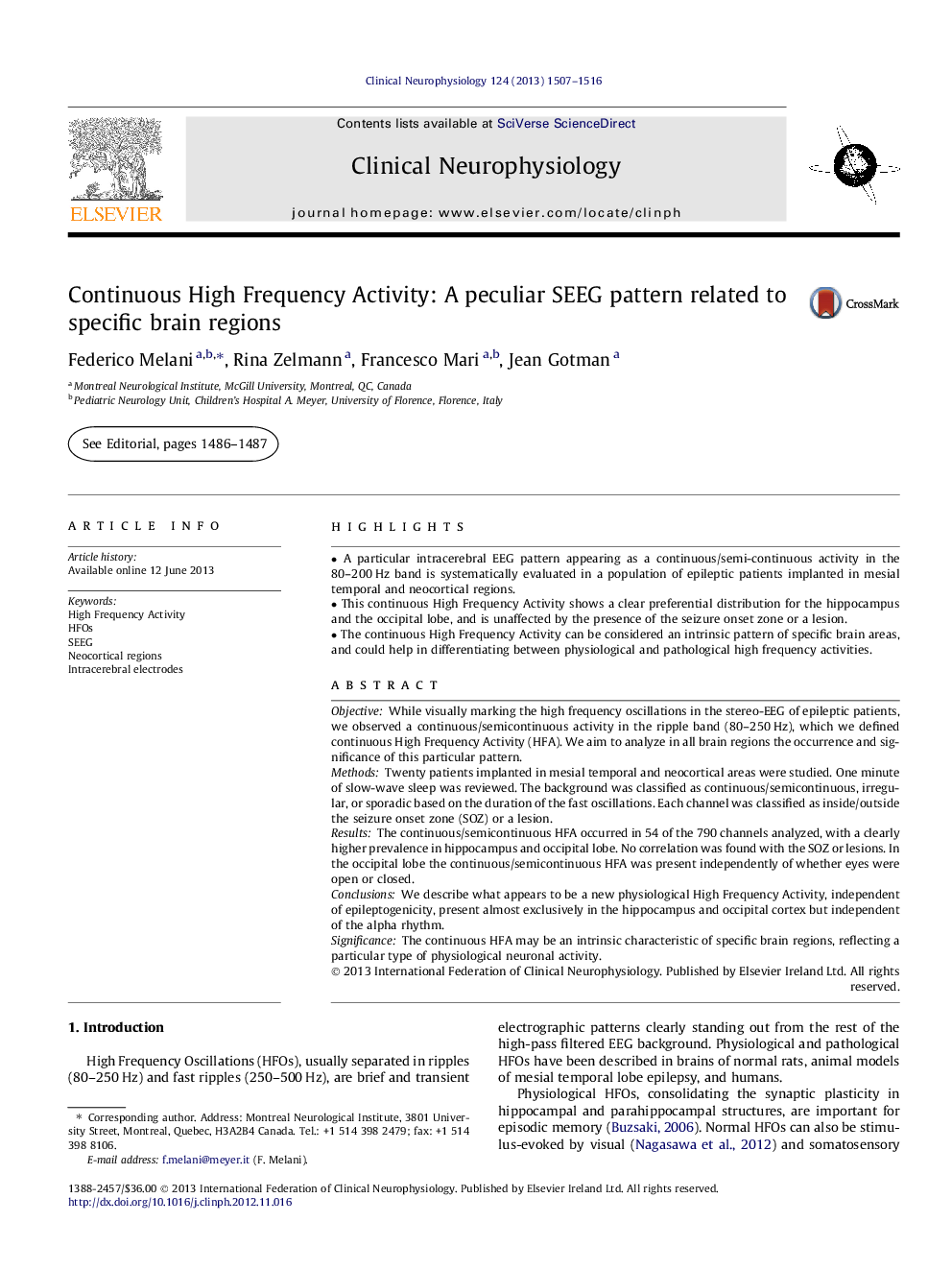| Article ID | Journal | Published Year | Pages | File Type |
|---|---|---|---|---|
| 3045175 | Clinical Neurophysiology | 2013 | 10 Pages |
ObjectiveWhile visually marking the high frequency oscillations in the stereo-EEG of epileptic patients, we observed a continuous/semicontinuous activity in the ripple band (80–250 Hz), which we defined continuous High Frequency Activity (HFA). We aim to analyze in all brain regions the occurrence and significance of this particular pattern.MethodsTwenty patients implanted in mesial temporal and neocortical areas were studied. One minute of slow-wave sleep was reviewed. The background was classified as continuous/semicontinuous, irregular, or sporadic based on the duration of the fast oscillations. Each channel was classified as inside/outside the seizure onset zone (SOZ) or a lesion.ResultsThe continuous/semicontinuous HFA occurred in 54 of the 790 channels analyzed, with a clearly higher prevalence in hippocampus and occipital lobe. No correlation was found with the SOZ or lesions. In the occipital lobe the continuous/semicontinuous HFA was present independently of whether eyes were open or closed.ConclusionsWe describe what appears to be a new physiological High Frequency Activity, independent of epileptogenicity, present almost exclusively in the hippocampus and occipital cortex but independent of the alpha rhythm.SignificanceThe continuous HFA may be an intrinsic characteristic of specific brain regions, reflecting a particular type of physiological neuronal activity.
•A particular intracerebral EEG pattern appearing as a continuous/semi-continuous activity in the 80–200 Hz band is systematically evaluated in a population of epileptic patients implanted in mesial temporal and neocortical regions.•This continuous High Frequency Activity shows a clear preferential distribution for the hippocampus and the occipital lobe, and is unaffected by the presence of the seizure onset zone or a lesion.•The continuous High Frequency Activity can be considered an intrinsic pattern of specific brain areas, and could help in differentiating between physiological and pathological high frequency activities.
